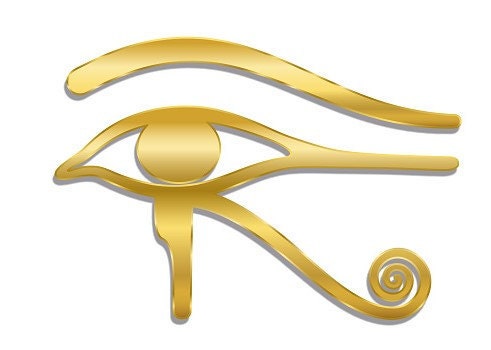The Horus eye, which we see in gold, silver, lapis, wood, porcelain jewelry, as a tattoo or as an accessory, perhaps has a much deeper meaning than we think, because it is believed to be healing and protection power.
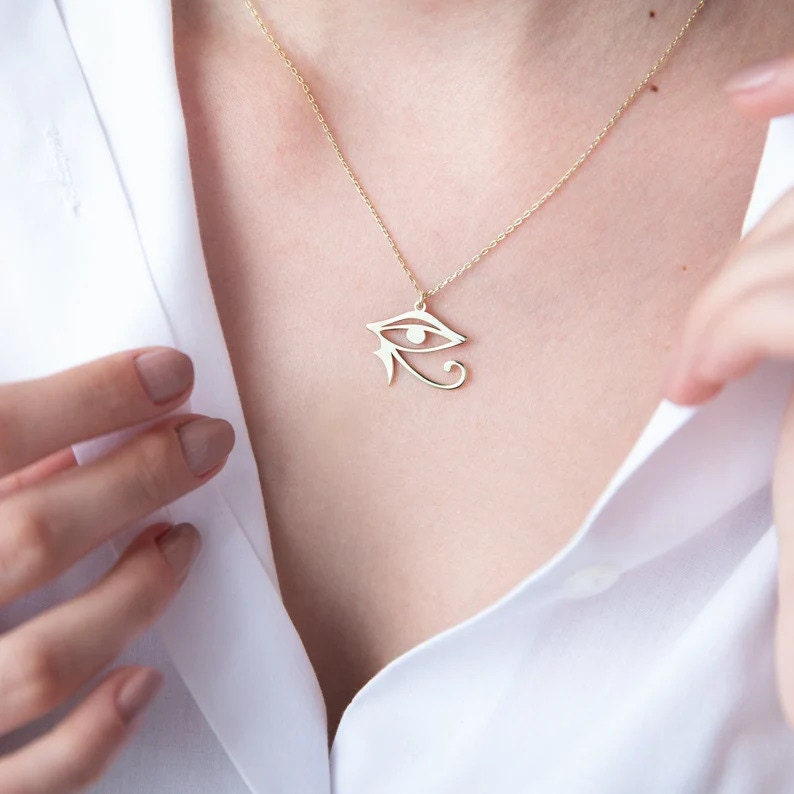
Handmade Eye Of Horus Necklace
The eye of Horus is the name given to the left eye of the god Horus, also called the "Moon eye" in ancient Egyptian depictions. Horus was one of the most important gods of Ancient Egypt, as the pharaohs saw themselves as the incarnation of Horus on earth. This complex eye; it had many important powers, from fending off talismans, guiding boots to showing life after death. The eye of Horus is also known as the eye of conscience because the endless struggle for the throne has its roots in Ancient Egypt.
What is the legend about Eye of Horus?

In some sources, Seth, who has ambitions to rule Egypt, kills his brother Osiris with his treacherous plan. The pieces found by his wife Isis were completed and Osiris came back to life and Horus donated his missing eye. However, although the completion part is with the support of Thoth, since the eye will not work as before, it fills this deficiency with magic power due to its divine characteristics.
In other sources, during the war between Seth and Horus, who represents evil, the eye was shattered, and Toht brought the pieces together with his fingers and restored this eye with a magical healing.
What is the mathematical secret of the Eye of Horus?
Gay Robins and Charles Shute mentioned in his book The Rhind Mathematical Papyrus; “It was commonly used in maize to measure the amount of flour or grain, and was called hectare (about 4.8 liters). For smaller amounts, 1/2, 1/4, 1/8, 1/16, 1/32, 1/64... defined as part of the eye.”

This situation, which is clearly expressed in the Rhind Papyrus, consists of parts called "glyphs", as seen in the picture above, in the Eye of Horus. In these 6 parts, respectively, ½ part represents hearing, ¼ part vision, 1/8 part thinking, 1/16 part smell and 1/32 part taste, and 1/64 part represent tears (compassion). And their sum is 63/64. As it is understood, the five senses and thought systems rationally found meaning in the eyes of Horus.
If the Horus - Seth - Thoth story has a mathematical connotation, it is between 1 and 1/64, and their sum is 1, that is, incomplete. If a whole is continually divided into two, one or oneness can never be achieved in the total value, except infinity.
What is the relationship of the Eye of Horus and the human brain?
Another name for the Eye of Horus is the “Eye of the Mind”. When the Eye of Horus is superimposed over a cross-section of the human brain, each of the six sections of the eye corresponds to one of the major sensory centres.
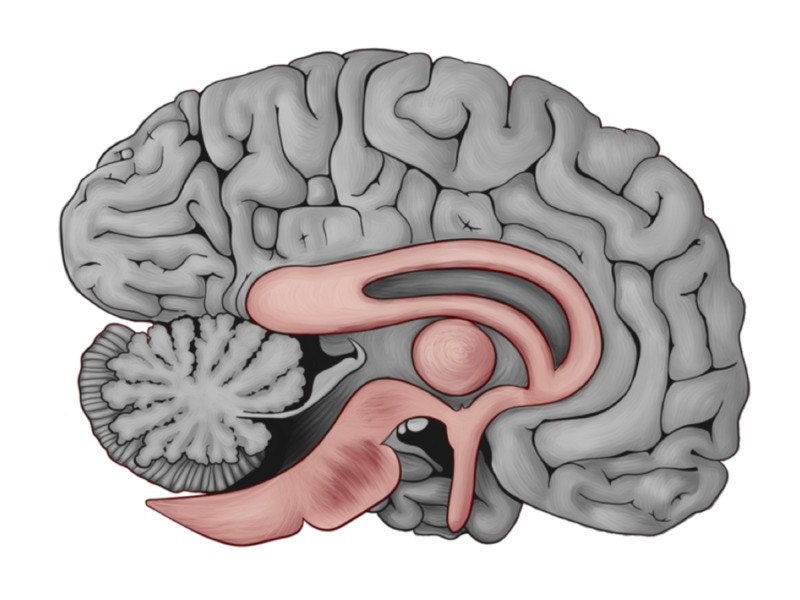
Ancient Egyptians were known to be leaders in medicine and anatomy. However, what is fascinating is their understanding of the intricate functions of the central nervous system without the presence of modern technology.
The Eye of Horus Decoded
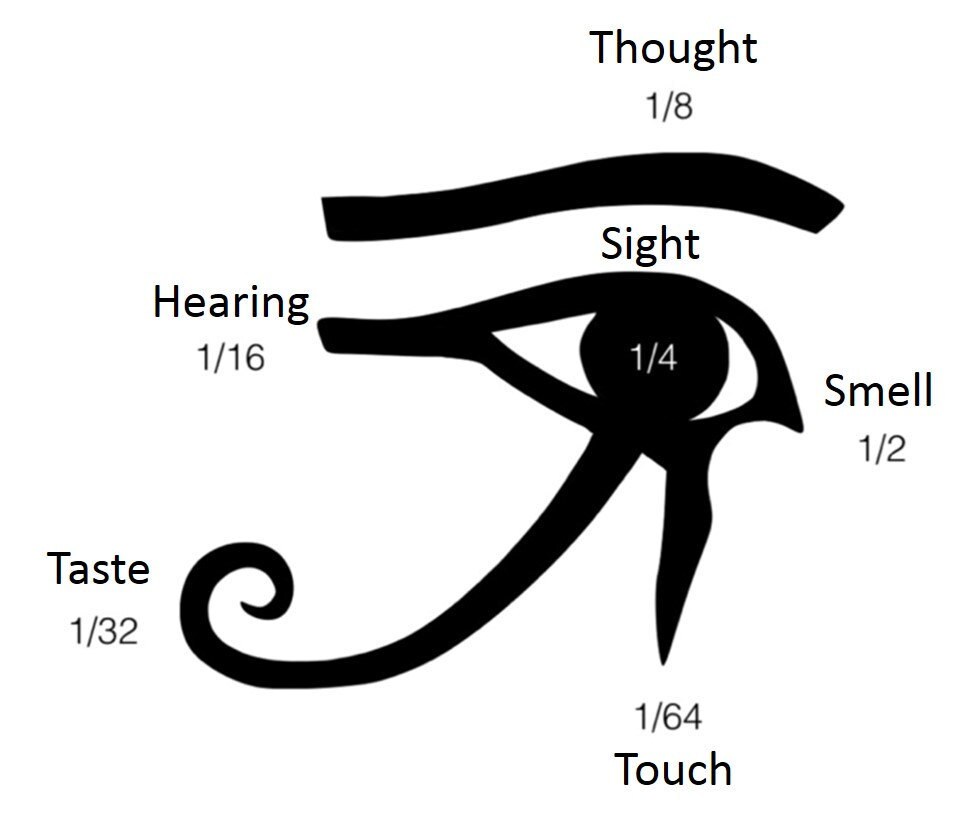
The following is a list of each part of the Eye of Horus to sections of the brain:
Smell: The triangular-shaped section on the right side of the eye is located in the olfactory trigone. On closer examination, it may seem to be shaped like a human nose.
Vision: The pupil of the eye corresponds to the interthalamic adhesion.
Humans “see” colours and shapes as vision when the light hits the retina inside the globe. This, in turn, sends neuronal electrical impulses through the optic pathways to the interthalamic adhesion.
Wisdom: The eyebrow corresponds to the shape and location of the corpus callosum. The eyebrow is indictive of thinking. People tend to move their eyebrows to express various emotions.
Hearing: The triangular left side of the eye corresponds to the location of the Brodman areas 41 and 42, which are the centre of hearing in humans.
Taste: The coil represents the taste pathway in the human brain.
Touch: The teardrop represents the shape and location of the somatosensory pathway; this carries many sensations from the body.
How is the Eye of Horus used today?
The popularity of the Eye of Horus as a protective symbol continued beyond the time of the ancient Egyptian civilizations. Today, many people use this symbol on their jewelry to protect against the evil intentions of those around them.
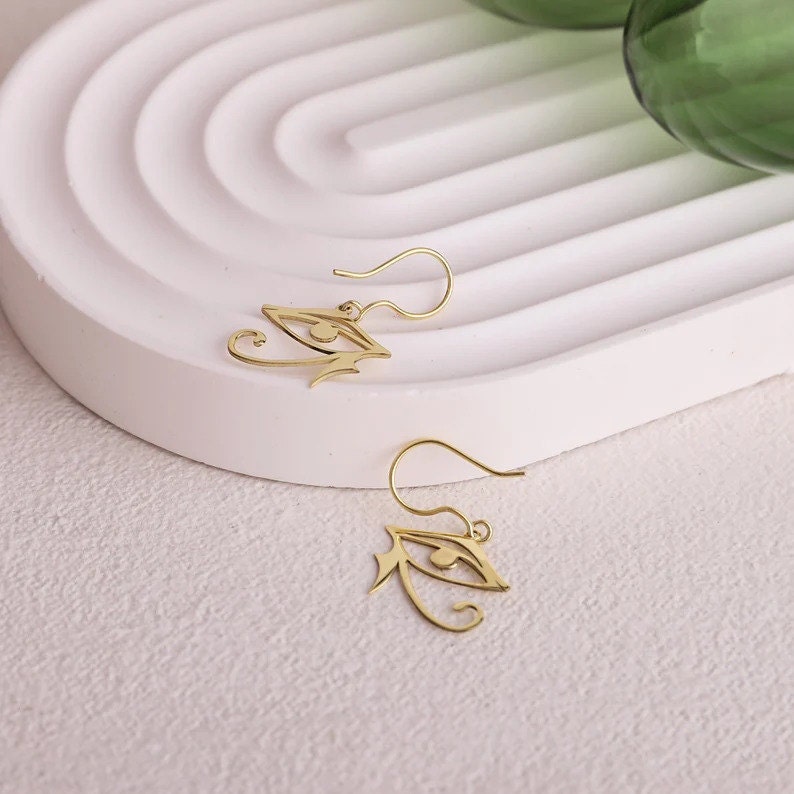
Fishermen and sailors from Mediterranean countries paint the Eye of Horus on their ships for protection. Many believe the Eye of Horus is associated with the Eye of Providence, originally depicted on US $1 bills originating from Christian iconography.
Some occultists, such as the Thelemites, depict the Eye of Horus in a triangle and interpret it as a symbol of elemental fire. Conspiracy theorists think that many eye symbols, including the Eye of Horus and the Eye of Providence, are basically the same – they represent illusion, power, manipulation, knowledge, and control of subjugation and the true power behind many governments today.
In today's mainstream society, belief in the Eye of Horus as a symbol of protection, health, sovereignty and royalty is mostly evidenced by its popularity in jewelry design. Many people around the world continue to be fascinated by the legends behind the Horus icon and hold the same strong belief in the protection it offers.

